User:Marshallsumter/Radiation astronomy/Courses/Principles/Syllabus/Fall

For those wishing to take a formally structured undergraduate university semester-length course, this is the Fall offering for principles of radiation astronomy.
General course details may be found at the Syllabus.
August 22, 2022, Monday
[edit | edit source]
- Lecture: Radiation astronomy.
August 23, 2022, Tuesday
[edit | edit source]
- Laboratory: Cosmogony laboratory, report is due on August 30, 2022.
- Quiz: Radiation astronomy quiz.
- Quiz section lecture: Meteor astronomy.
August 24, 2022, Wednesday
[edit | edit source]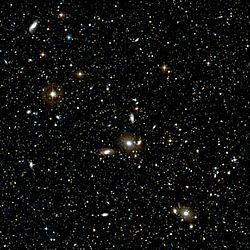
- Lecture: Galaxy cluster astronomy.
August 25, 2022, Thursday
[edit | edit source]
- Lesson: First blue source in Boötes, report due on September 1, 2022.
- Problem set: Energy phantoms, solutions including work steps due on September 1, 2022.
- Quiz: Meteor astronomy quiz.
August 26, 2022, Friday
[edit | edit source]
- Lecture: High-velocity galaxy astronomy.
August 29, 2022, Monday
[edit | edit source]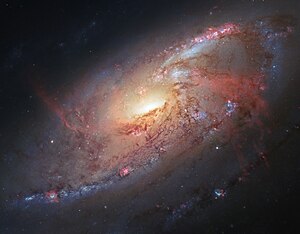
- Lecture: Galaxy astronomy.
August 30, 2022, Tuesday
[edit | edit source]
- Laboratory: Cratering, report is due on September 6, 2022.
- Quiz section lecture: Active galactic nuclei astronomy.
August 31, 2022, Wednesday
[edit | edit source]
- Lecture: Nebula astronomy.
September 1, 2022, Thursday
[edit | edit source]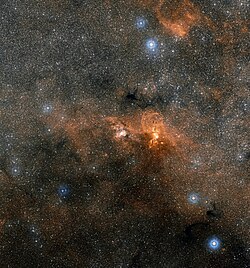
- Lesson: First cyan source in Caelum, report due on September 8, 2022.
- Problem set: Furlongs per fortnight, solutions including work steps due on September 8, 2022.
- Quiz: Active galactic nuclei quiz.
- Quiz: Nebula quiz.
September 2, 2022, Friday
[edit | edit source]
- Lecture: Standard candle astronomy.
September 5, 2022, Monday
[edit | edit source]
- Lecture: Hypervelocity stellar astronomy.
September 6, 2022, Tuesday
[edit | edit source]- Laboratory: Analytical astronomy, report is due on September 13, 2022.
- Quiz: Standard candles quiz.
- Quiz: Hypervelocity stars quiz.
- Quiz section lecture: Stellar astronomy.
September 7, 2022, Wednesday
[edit | edit source]
- Lecture: Plasma-meteor astronomy.
September 8, 2022, Thursday
[edit | edit source]
- Lesson: First gamma-ray source in Triangulum Australe, report due on September 15, 2022.
- Problem set: Radiation astromathematics problems, solutions including work due on September 15, 2022.
- Quiz: Stellar astronomy quiz.
- Quiz: Plasma-meteors quiz.
September 9, 2022, Friday
[edit | edit source]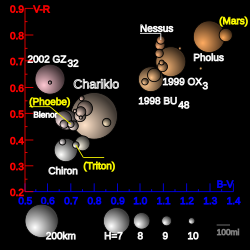
- Lecture: Scattered disk astronomy.
September 12, 2022, Monday
[edit | edit source]
- Lecture: Planetary astronomy.
September 13, 2022, Tuesday
[edit | edit source]
- Laboratory: Electric orbits, report is due on September 20, 2022.
- Quiz: Planetary astronomy quiz.
- Quiz section lecture: Oort cloud astronomy.
September 14, 2022, Wednesday
[edit | edit source]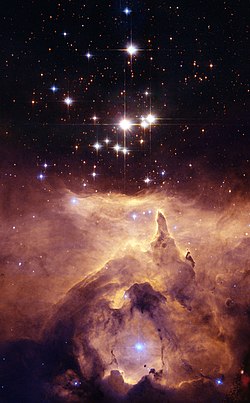
- Lecture: Cloud astronomy.
September 15, 2022, Thursday
[edit | edit source]
- Lesson: First green source in Tucana, report due on September 22, 2022.
- Problem set: Problem set for radiation astronomy, solutions including work steps due on September 22, 2022.
- Quiz: Oort cloud astronomy quiz.
- Quiz: Cloud astronomy quiz.
September 16, 2022, Friday
[edit | edit source]
- Lecture: Kuiper belt astronomy.
September 19, 2022, Monday
[edit | edit source]
- Lecture: Asteroid astronomy.
September 20, 2022, Tuesday
[edit | edit source]
- Laboratory: Electron beam heating, report is due on September 27, 2022.
- Quiz: Kuiper belt astronomy quiz.
- Quiz: Asteroid astronomy quiz.
- Quiz section lecture: Cometary astronomy.
September 21, 2022, Wednesday
[edit | edit source]
- Lecture: Aerometeor astronomy.
September 22, 2022, Thursday
[edit | edit source]
- Lesson: First infrared source in Crux, report due on September 29, 2022.
- Problem set: Vectors and coordinates, solutions including work steps due on September 29, 2022.
- Quiz: Cometary astronomy quiz.
- Quiz: Aerometeor astronomy quiz.
September 23, 2022, Friday
[edit | edit source]
- Lecture: Rock astronomy.
September 26, 2022, Monday
[edit | edit source]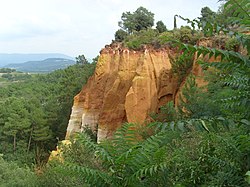
- Lecture: Mineral astronomy.
September 27, 2022, Tuesday
[edit | edit source]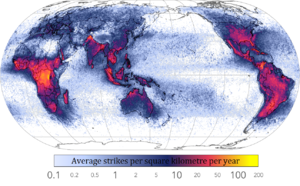
- Laboratory: Galaxies, report is due on October 4, 2022.
- Quiz: Rock astronomy quiz.
- Quiz: Minerals astronomy quiz.
- Hourly: Principles of radiation astronomy hourly 1 quiz for lectures 1-16. Questions may include quiz section lectures, lessons, problem sets, and laboratories up to today but not today's laboratory or quiz section lecture.
- Quiz section lecture: Lightning astronomy.
September 28, 2022, Wednesday
[edit | edit source]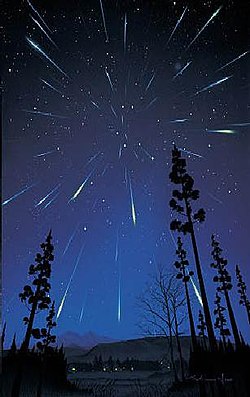
- Lecture: Meteoroid astronomy.
September 29, 2022, Thursday
[edit | edit source]- Lesson: First neutron source in Volans, report due on October 6, 2022.
- Problem set: Unknown coordinate systems, solutions including work steps due on October 6, 2022.
- Quiz: Lightning astronomy quiz.
- Quiz: Meteoroid astronomy quiz.
September 30, 2022, Friday
[edit | edit source]
- Lecture: Meteor-shower astronomy.
October 3, 2022, Monday
[edit | edit source]- Lecture: Fiery meteor astronomy.
October 4, 2022, Tuesday
[edit | edit source]
- Laboratory: Intergalactic medium, report is due on October 11, 2022.
- Quiz: Meteor-shower astronomy quiz.
- Quiz: Fiery-meteor astronomy quiz.
- Quiz section lecture: Particle astronomy.
October 5, 2022, Wednesday
[edit | edit source]
- Lecture: Lithometeor astronomy.
October 6, 2022, Thursday
[edit | edit source]
- Lesson: First orange source in Cancer, report due on October 13, 2022.
- Problem set: Unusual units, solutions including work steps due on October 13, 2022.
- Quiz: Particle astronomy quiz.
- Quiz: Lithometeor astronomy quiz.
October 7, 2022, Friday
[edit | edit source]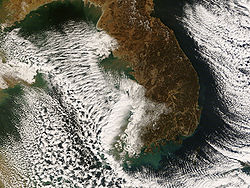
- Lecture: Cryometeor astronomy.
October 10, 2022, Monday
[edit | edit source]
- Lecture: Hydrometeor astronomy.
October 11, 2022, Tuesday
[edit | edit source]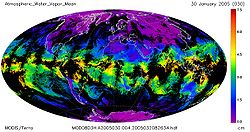
- Laboratory: Locating the Sun, report is due on October 18, 2022.
- Quiz: Cryometeor astronomy quiz.
- Quiz: Hydrometeor astronomy quiz.
- Quiz section lecture: Molecule astronomy.
October 12, 2022, Wednesday
[edit | edit source]
- Lecture: Acoustic astronomy.
October 13, 2022, Thursday
[edit | edit source]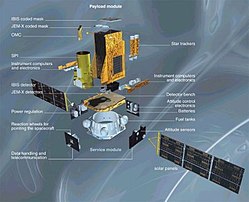
- Lesson: First positron source in Phoenix, report due on October 20, 2022.
- Problem set: Telescopes and cameras, solutions including work steps due on October 20, 2022.
- Quiz: Molecule astronomy quiz.
- Quiz: Acoustic astronomy quiz.
October 14, 2022, Friday
[edit | edit source]
- Lecture: Atomic astronomy.
October 17, 2022, Monday
[edit | edit source]
- Lecture: Neutrals astronomy.
October 18, 2022, Tuesday
[edit | edit source]
- Laboratory: Meteorites, report is due on October 25, 2022.
- Quiz: Atomic astronomy quiz.
- Midterm examination: Principles of radiation astronomy midterm quiz.
This quiz is for lectures up through and including optical astronomy (1-24), the prior weeks laboratories, quiz section lectures from the course beginning through and including interplanetary medium, lessons and problem sets through and including those due previously to today.
- Quiz: Neutrals astronomy quiz.
- Quiz section lecture: Subatomics astronomy.
October 19, 2022, Wednesday
[edit | edit source]
- Lecture: Cosmic-ray astronomy.
October 20, 2022, Thursday
[edit | edit source]- Lesson: First radio source in Pisces, report due on October 27, 2022.
- Problem set: Angular momentum and energy, solutions including work steps due on October 28, 2021.
- Quiz: Subatomic astronomy quiz.
- Quiz: Cosmic rays astronomy quiz.
October 21, 2022, Friday
[edit | edit source]- Lecture: Alpha-particle astronomy.
October 24, 2022, Monday
[edit | edit source]
- Lecture: Hadron astronomy.
October 25, 2022, Tuesday
[edit | edit source]
- Laboratory: Neutrinos from the Sun, report is due on November 1, 2022.
- Quiz: Hadron astronomy quiz.
- Quiz section lecture: Baryon astronomy.
October 26, 2022, Wednesday
[edit | edit source]
- Lecture: Neutron radiation astronomy.
October 27, 2022, Thursday
[edit | edit source]
- Lesson: First red source in Canis Major, report due on November 6, 2022.
- Problem set: Cosmic circuits, solutions including work steps due on November 3, 2022.
- Quiz: Baryon astronomy quiz.
- Quiz: Neutron astronomy quiz.
October 28, 2022, Friday
[edit | edit source]
- Lecture: Proton astronomy.
October 31, 2022, Monday
[edit | edit source]- Lecture: Meson astronomy.
November 1, 2022, Tuesday
[edit | edit source]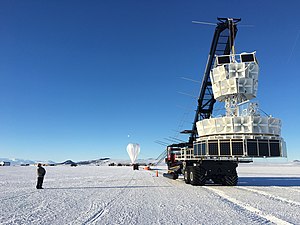
- Laboratory: Spectrum of Vega, report is due on November 8, 2022.
- Quiz: Proton astronomy quiz.
- Quiz: Meson astronomy quiz.
- Quiz section lecture: Tauon astronomy.
November 2, 2022, Wednesday
[edit | edit source]- Lecture: Muon astronomy.
November 3, 2022, Thursday
[edit | edit source]
- Lesson: First submillimeter source in Carina, report due on November 10, 2022.
- Problem set: Column densities, solutions including work steps due on November 10, 2022.
- Quiz: Tauon astronomy quiz.
- Quiz: Muon astronomy quiz.
- Hourly: Principles of radiation astronomy hourly 2 for Lectures 17-32. Questions may include quiz section lectures, laboratories, lessons and problem sets up to but not including today.
November 4, 2022, Friday
[edit | edit source]
- Lecture: Neutrino astronomy.
November 7, 2022, Monday
[edit | edit source]
- Lecture: Beta-particle astronomy.
November 8, 2022, Tuesday
[edit | edit source]
- Laboratory: Standard candles, report is due on November 15, 2022.
- Quiz: Neutrino astronomy quiz.
- Quiz: Beta-particle astronomy quiz.
- Quiz section lecture: Electron astronomy.
November 9, 2022, Wednesday
[edit | edit source]
- Lecture: Positron astronomy.
November 10, 2022, Thursday
[edit | edit source]
- Lesson: First superluminal source in Indus, report due on November 17, 2022.
- Problem set: Spectrographs, solutions including work steps due on November 17, 2022.
- Quiz: Electron astronomy quiz.
- Quiz: Positron astronomy quiz.
November 11, 2022, Friday
[edit | edit source]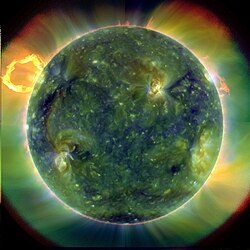
- Lecture: Electromagnetic astronomy.
November 14, 2022, Monday
[edit | edit source]
- Lecture: Synchrotron astronomy.
November 15, 2022, Tuesday
[edit | edit source]- Laboratory: Vertical precession, report is due on November 22, 2022.
- Quiz: Synchrotron astronomy quiz.
- Quiz section lecture: Color astronomy.
November 16, 2022, Wednesday
[edit | edit source]
- Lecture: Gamma-ray astronomy.
November 17, 2022, Thursday
[edit | edit source]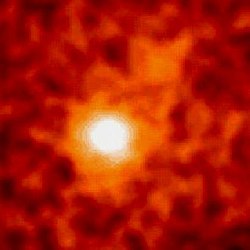
- Lesson: First ultraviolet source in Sagittarius, report due on November 24, 2022.
- Problem set: Planck's equation, solutions including work steps due on November 24, 2022.
- Quiz: Color astronomy quiz.
- Quiz: Gamma-ray astronomy quiz.
November 18, 2022, Friday
[edit | edit source]
- Lecture: X-ray astronomy.
November 21, 2022, Monday
[edit | edit source]
- Lecture: Ultraviolet astronomy.
November 22, 2022, Tuesday
[edit | edit source]- Laboratory: X-ray classification of a star, report is due on November 29, 2022.
- Quiz: X-ray astronomy quiz.
- Quiz: Ultraviolet astronomy quiz.
- Quiz section lecture: Optical astronomy.
November 23, 2022, Wednesday
[edit | edit source]
- Lecture: Visual astronomy.
November 24, 2022, Thursday
[edit | edit source]
- Lesson: First violet source in Leo, report due on December 1, 2022.
- Problem set: Synchrotron radiation problem set, solutions including work steps due on December 1, 2022.
- Quiz: Optical astronomy quiz.
- Quiz: Visual astronomy quiz.
November 25, 2022, Friday
[edit | edit source]
- Lecture: Violet astronomy.
November 28, 2022, Monday
[edit | edit source]
- Lecture: Blue astronomy.
November 29, 2022, Tuesday
[edit | edit source]
- Laboratory: X-ray trigonometric parallax, report is due on December 6, 2022.
- Quiz: Violet astronomy quiz.
- Quiz: Blue astronomy quiz.
- Quiz section lecture: Cyan astronomy.
November 30, 2022, Wednesday
[edit | edit source]
- Lecture: Green astronomy.
December 1, 2022, Thursday
[edit | edit source]
- Lesson: First X-ray source in Andromeda, report due on December 8, 2022.
- Problem set: Radiation dosage, solutions including work steps due on December 8, 2022.
- Quiz: Cyan astronomy quiz.
- Quiz: Green astronomy quiz.
December 2, 2022, Friday
[edit | edit source]
- Lecture: Yellow astronomy.
December 5, 2022, Monday
[edit | edit source]
- Lecture: Orange astronomy.
December 6, 2022, Tuesday
[edit | edit source]
- Laboratory: Magnetic field reversal, report is due on December 13, 2022.
- Quiz: Yellow astronomy quiz.
- Quiz: Orange astronomy quiz.
- Quiz section lecture: Red astronomy.
December 7, 2022, Wednesday
[edit | edit source]
- Lecture: Infrared astronomy.
December 8, 2022, Thursday
[edit | edit source]
- Lesson: First yellow source in Aquila, report due on December 15, 2022.
- Problem set: Star jumping, solutions including work steps due on December 15, 2022.
- Quiz: Red astronomy quiz.
- Quiz: Infrared astronomy quiz.
December 9, 2022, Friday
[edit | edit source]- Lecture: Submillimeter astronomy.
December 12, 2022, Monday
[edit | edit source]- Lecture: Microwave astronomy
December 13, 2022, Tuesday
[edit | edit source]- Quiz: Submillimeter astronomy quiz.
- Quiz: Microwave astronomy quiz.
- Quiz section lecture: Radar astronomy.
- Hourly: Principles of radiation astronomy hourly 3 for lectures 33-48, including quiz section lectures, lessons (except the last one), problem sets (except the last one), and laboratories not included in the first two hourlies.
December 14, 2022, Wednesday
[edit | edit source]
- Lecture: Radio astronomy.
December 15, 2022, Thursday
[edit | edit source]
- Quiz: Radar astronomy quiz.
- Quiz: Radio astronomy quiz.
December 16, 2022, Friday
[edit | edit source]
- Lecture: Gravitational astronomy.
December 19, 2022, Monday
[edit | edit source]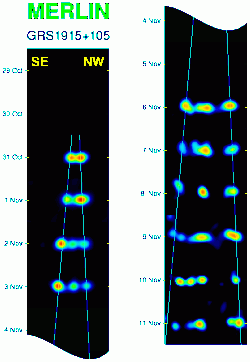
- Lecture: Superluminal astronomy.
December 20, 2022, Tuesday
[edit | edit source]
- Quiz: Gravitational astronomy quiz.
- Quiz: Superluminal astronomy quiz.
December 23, 2022, Friday
[edit | edit source]
- Final examination: Principles of radiation astronomy final exam covers everything in the course.
Alternate examinations that may be used by your college or university for credit (and a grade) in this course will be available from Wikiversity by courier for closed, proctored session testing of proficiency.
Hypotheses
[edit | edit source]- By subpaging as many of the lectures in this course as possible under radiation astronomy the overall popularity of the course, or lecture set, can be compared with other lecture sets here at Wikiversity.
See also
[edit | edit source]External links
[edit | edit source]- International Astronomical Union
- NASA/IPAC Extragalactic Database - NED
- NASA's National Space Science Data Center
- Office of Scientific & Technical Information
- The SAO/NASA Astrophysics Data System
- SDSS Quick Look tool: SkyServer
- SIMBAD Astronomical Database
- SIMBAD Web interface, Harvard alternate
- Spacecraft Query at NASA
- Universal coordinate converter
{{Charge ontology}}{{Chemistry resources}}{{Physics resources}}
{{Radiation astronomy resources}}{{Technology resources}}
|
Learn more about Radiation astronomy |
|
Learn more about Syllabus |